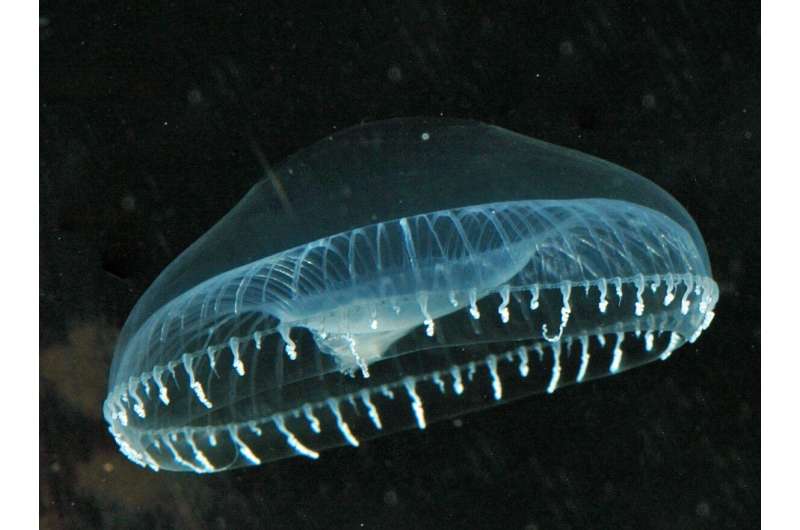To study temperature in ion-storage rings, researchers used a model of a biomolecule found in the jellyfish Aequorea victoria. Credit: Sierra Blakely [https://en.wikipedia.org/wiki/File:Aequorea4.jpg
New research introduces a simple way to determine the temperature of a stored biomolecule and assess how it changes overtime.
The range of applications for ultracold molecular systems has grown impressively over recent years to include interstellar chemistry, spectroscopy, and arguably most excitingly, quantum computing.
One way of cooling molecules is by trapping them in cooled ion traps to which the molecules are thermalized before being injected or by injecting them into a room temperature storage ring and then cooling it. To do this effectively, researchers need a method to determine the temperature of molecular ions in an ion-storage ring.
New research published in The European Physical Journal D introduces a relatively simple new way to determine the temperature of stored biomolecular ions produced by electrospray ionization, and measure the time evolution of the temperature. The research is authored by Anne P. Rasmussen, Ricky Teiwes, and Lars H. Andersen of the Department of Physics and Astronomy, Aarhus University, Denmark, along with Dilara A. Farkhutdinova, and Anastasia V. Bochenkova of Lomonosov of the Moscow State University chemistry department, Russia.
To investigate this, the researchers used a model of a protonated green fluorescence protein (GFP) chromophore found in the jellyfish Aequorea victoria that creates characteristic green bioluminescence by converting blue light to green light to determine the temperature of the ions in a storage ring as a function of the time for which they were stored.
This required storing the ions in the ring for 500 milliseconds and exposing them to a laser pulse every 20 milliseconds, then watching the decay rate to a hot ground state after excitation by a single photon.
Because the fragmentation rate of GFP is temperature-dependent the team was able to follow the temperature evolution as a function of the storage time in the ring and thus demonstrate that the absorption spectra of this chromophore show a clear dependence on the temperature and thus the internal energy.
This validated the method as a simple way to get an estimate of the temperature of ions in a storage ring.
More information: Anne P. Rasmussen et al, On the temperature of large biomolecules in ion-storage rings, The European Physical Journal D (2022). DOI: 10.1140/epjd/s10053-022-00400-y
Journal information: European Physical Journal D
Provided by Springer
























